How to choose the right screen…
One size definitely does NOT fit all!
With such a confusing range of display options to choose from, choosing the right size and type of screen for specific applications and particular spaces can be time-consuming and difficult…
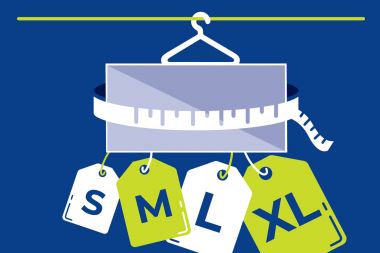
And how to know - or prove - you’ve selected the right one?
All too often, displays are barely ‘good-enough’, rather than ‘best in class’ for their application and location - a missed opportunity to impress clients and guarantee best value.
Use our quick-reference screen guide to understand the four size categories and how to identify the best technology for your needs quickly - and with confidence.
Let’s start with a spoiler alert: if you don’t get the image size right according to the DISCAS standard’s 6:1 rule (or application of its %Element Height exercise) in today’s socially distanced spaces, you fail at the first step.
| Farthest viewer from screen (m) |
Minimum screen height (m) |
Screen size ("/diagonal) |
|---|---|---|
| 4 | 0.8 | 65 |
| 5 | 0.95 | 75 |
| 6 | 1.1 | 86 |
| 7 | 1.25 | 100 |
| 8 | 1.4 | 110 |
| 9 | 1.5 | 120 |
| 10 | 1.7 | 135 |
| 11 | 1.85 | 150 |
| 12 | 2 | 160 |
| 13 | 2.25 | 180 |
| 14 | 2.4 | 190 |
| 15 | 2.5 | 200 |

Learn all about the DISCAS image size, resolution, viewing positions/angles standard here or on our free webinars.
What size should my screen be?
For a quick and easy way to choose the right display with confidence, we have created this simple 3-Step Guide to Display Success.
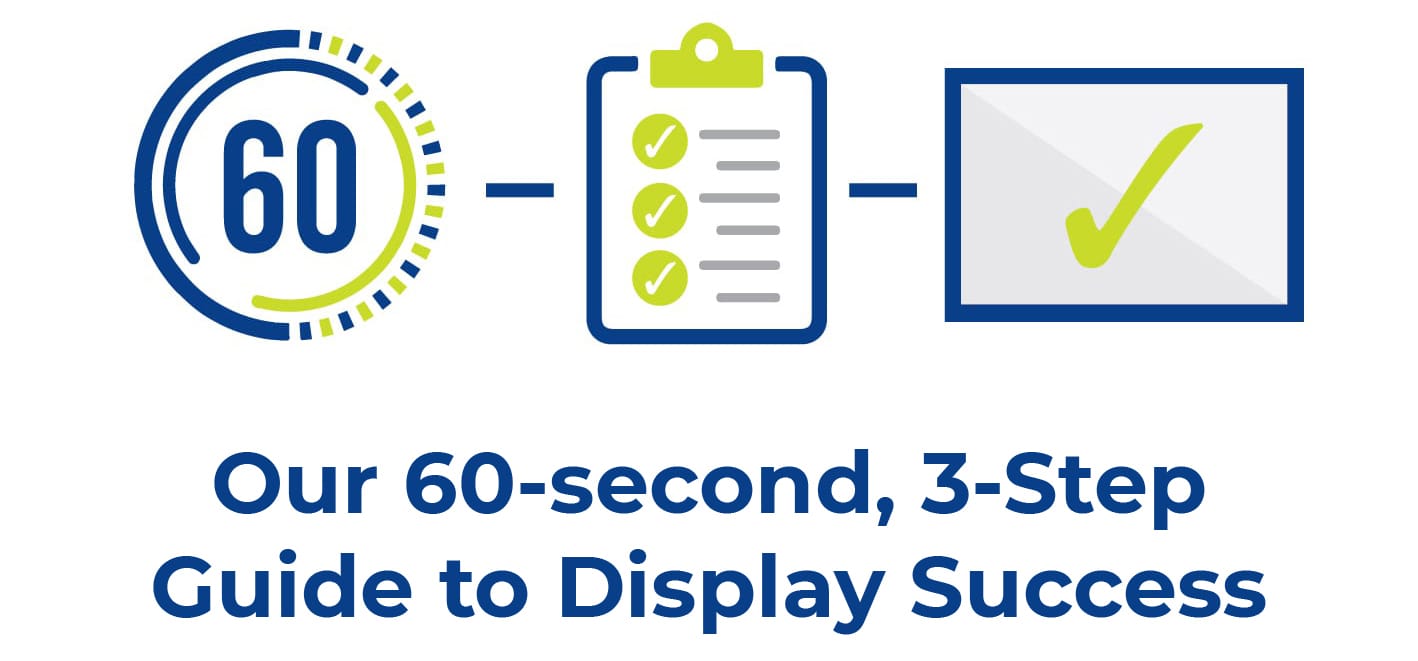
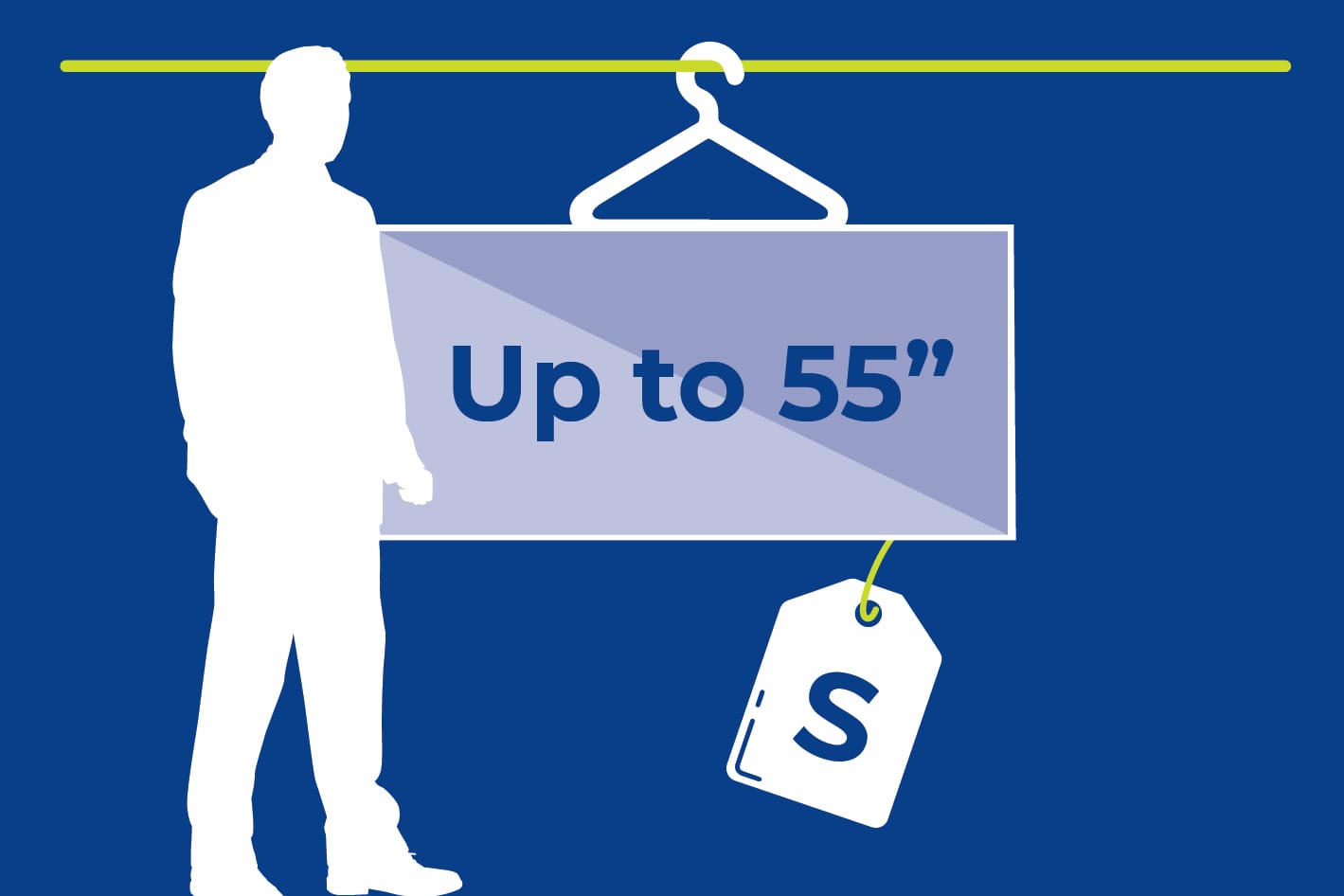
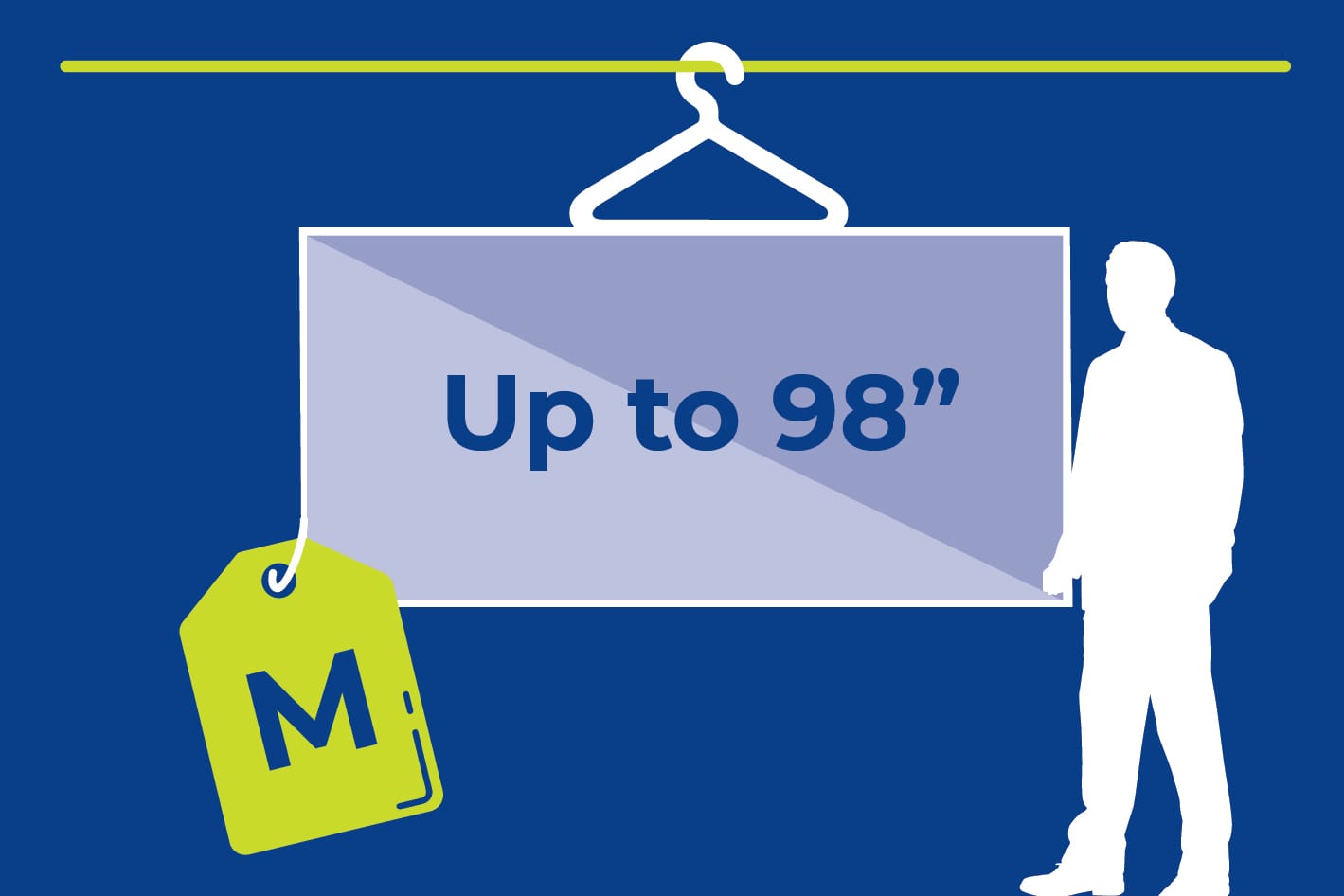
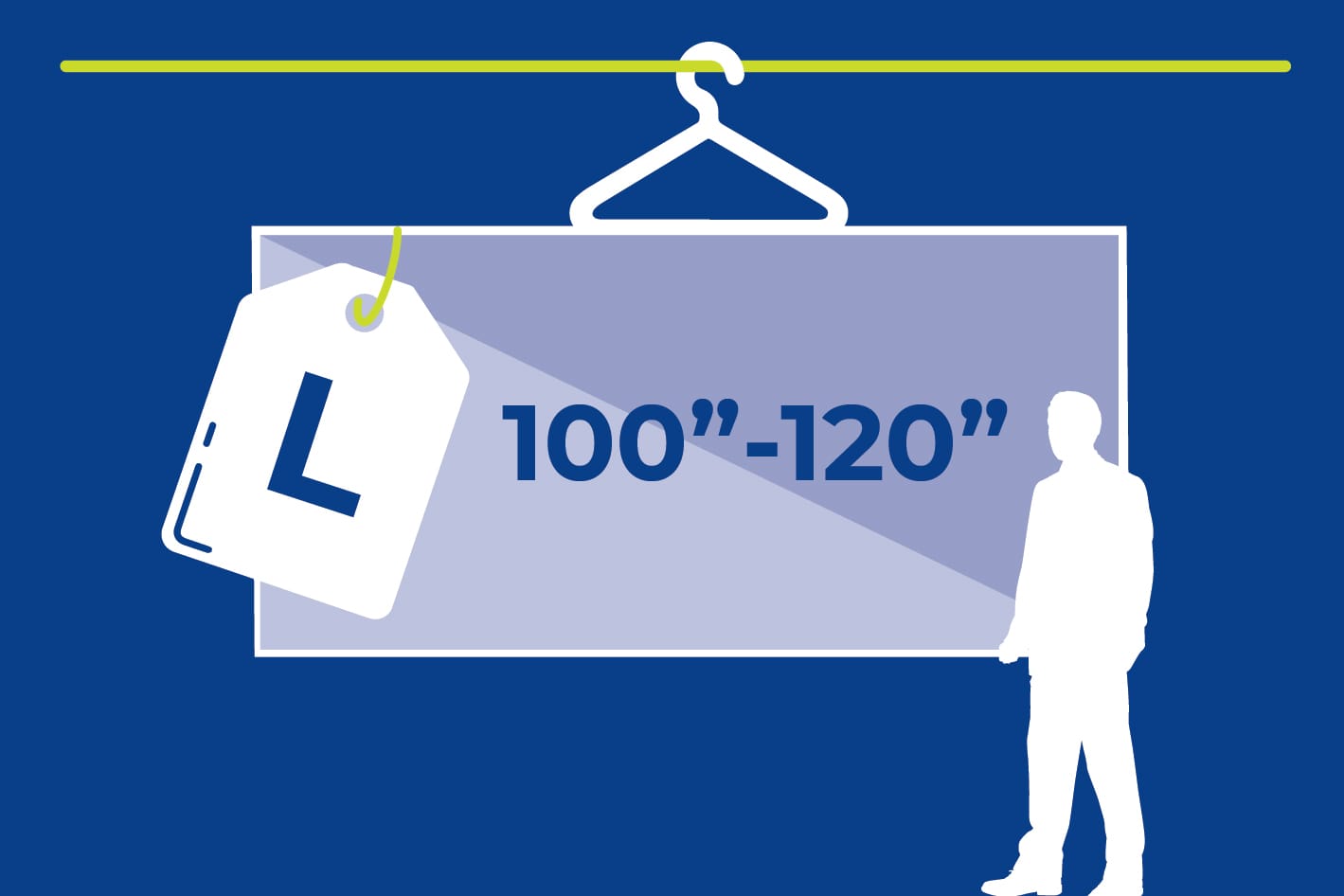
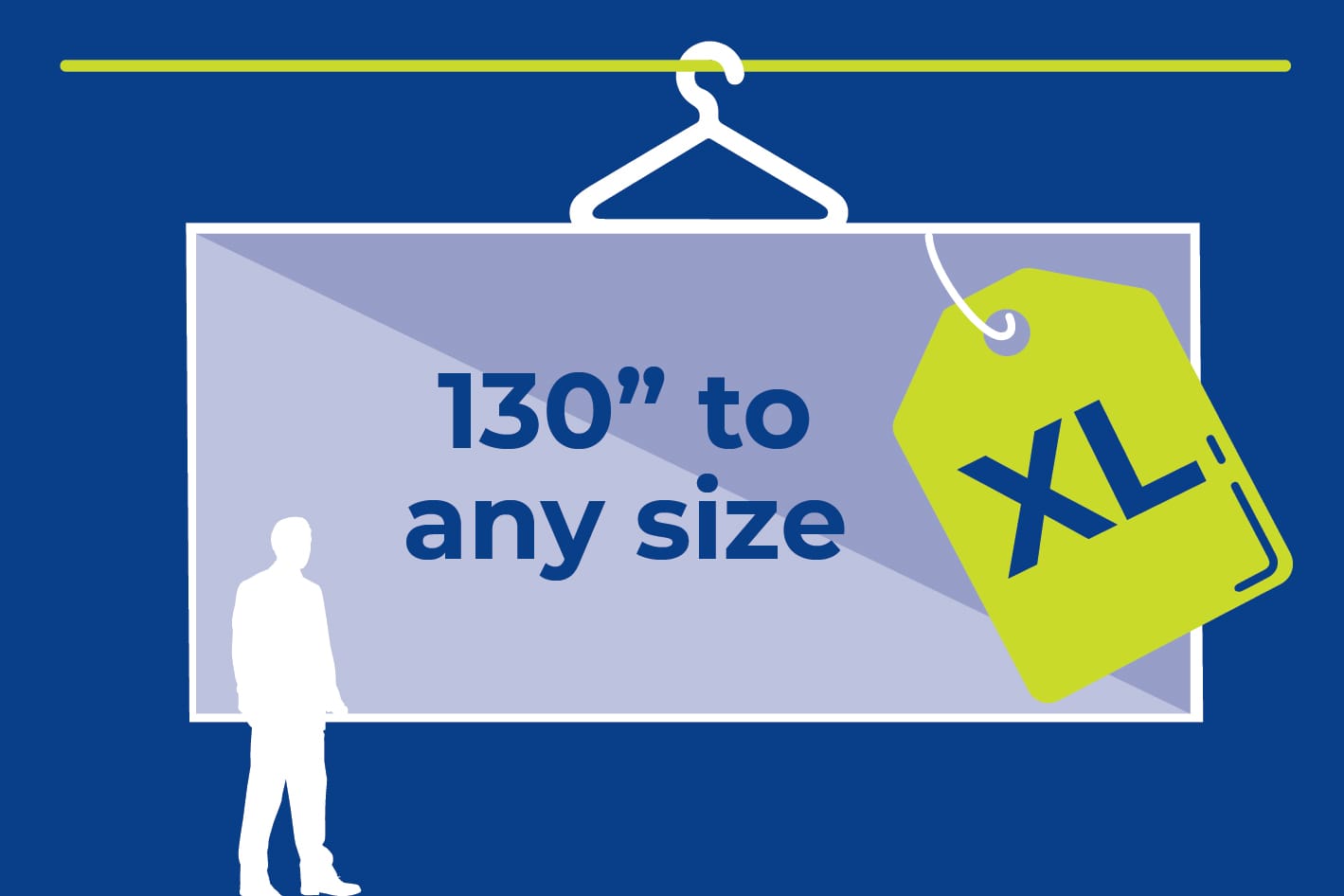
Direct view LED (dvLED) screens are the go-to choice for digital signage, plus there are outdoor options. They are bright and impactful - too bright for extended ‘serious’ viewing. Also, viewers cannot sit nearly as close to the screen as they can with projection.
Specifying dvLED displays can be a nightmare as apparent like-for-like comparisons hide a vast array of quality issues, based on a ‘binning’ system whereby individual LEDs are graded. Let us help you through this minefield!

WHAT DOES ‘PROJECTION DONE PROPERLY’ ACTUALLY MEAN?!
It means using a scientifically selected bundle of laser projector, ALR (ambient light rejecting) screen, plus mount. These complete display packages are carefully curated on the basis of delivered image performance, so they can exceed the globally adopted AVIXA quality standards.
Are off-the-peg solutions off-the-table?
When can I use a standard ‘brown box’ flat panel?
Is there a 100% hassle-free way to use Standards to ensure my clients have their needs met, exceeded - and even to enhance our working relationships?
Off-the-peg solutions don't always tick all the Standards boxes or work well in spaces with high ambient light levels, but we can help tailor those screen solutions and technologies to your exact requirements, ensuring that you don't create 'cheap seats' for your audience.
FAQs - choosing the right display
- What is the best projection screen?
- Is a flat panel display better than projector and screen?
- What is the best display for a meeting room?
- What are the best displays for a lecture theatre?
- Can I use projection in a brightly lit room?
What is the best projection screen?
- Choose the right screen for your requirement and budget
- Type - fixed / portable / electric drop-down
- Size - from 100” up to any size
- Brightly lit rooms require specialist ambient-light rejecting screens
- Small spaces require compact ultra short-throw displays
Our range of professional projection screens from dnp denmark, Euroscreen and Draper includes electric drop-down, manual, fixed frame, frameless and seamless modular screens of up to any size and specialist technologies such as ambient light-rejecting screens for brightly lit conditions. This gives us the best possible selection to ensure we have the right screen for your requirements.
Is a flat panel display better than projector and screen?
- It depends on size and budget
- Up to 90” choose a flat panel display (professional grade anti-reflective surface)
- Over 90” choose projection (for best results ambient light rejecting (ALR) screen + laser projector)
- Over 90” flat panel displays are much more expensive than ALR laser projection
Our Complete Laser Display is an all in one solution (ALR screen, laser projector and mount) that is guaranteed to deliver AV standards-exceeding image quality at a fraction of the price of flat panels. From 100” to any size.
What is the best display for a meeting room?
Use AVIXA’s DISCAS and PISCR/ISCR global AV standards to calculate minimum size and quality requirements for viewers’ needs. For small – medium rooms, professional flat-panel displays are suitable. Larger rooms require larger displays – for example a 6m deep room requires a minimum screen size of 100” to ensure viewers can clearly see and engage with content from everywhere in the room. At this size, projection is the appropriate solution, but it should be ambient light rejecting (ALR) laser projection for best results.
What are the best displays for a lecture theatre?
Lecture theatre displays must be large and powerful enough for detailed content to be clearly viewable from everywhere in a room. From 100” and above, a projected display offers the best size / cost / quality ratio for large displays for detailed viewing.
Can I use projection in a brightly lit room?
Yes, but to avoid weak, washed out images you need a specialist technology. With a standard projection screen you need to control the light level in a room to get a decent image. An ambient light-rejecting projection screen will deliver crisp, bright, high-contrast images even in brightly lit conditions. When paired with a maintenance-free laser projector you get a better result that a flat panel display at a fraction of the cost.

![LASER DISPLAY BUNDLE HOME PAGE BANNER [DOWNLOAD BROCHURE] [MOBILE 800x196px].jpg](/application/files/8416/0828/7531/LASER_DISPLAY_BUNDLE_HOME_PAGE_BANNER_DOWNLOAD_BROCHURE_MOBILE_800x196px.jpg)
